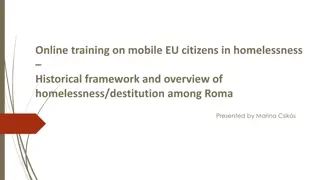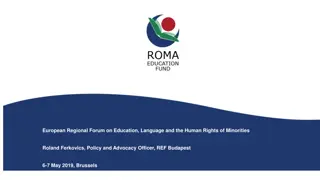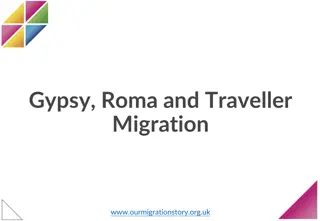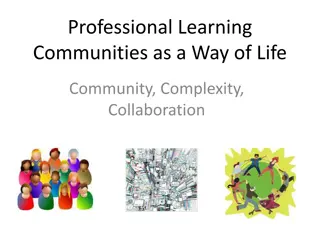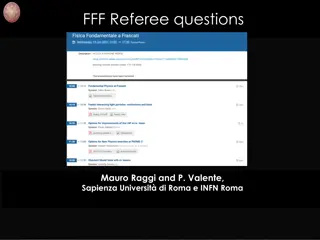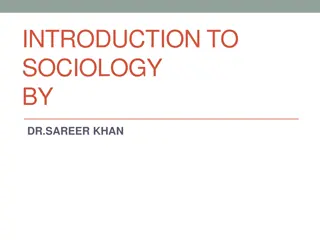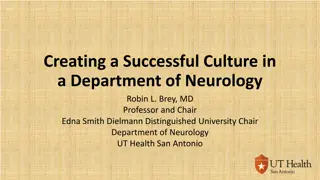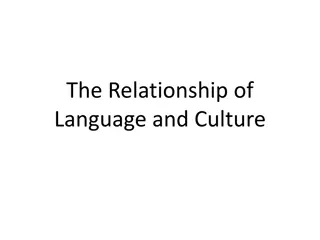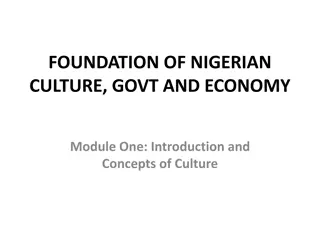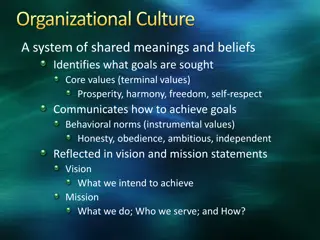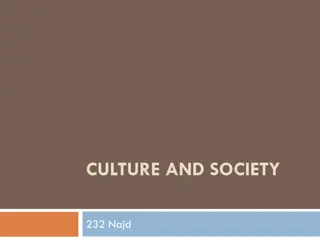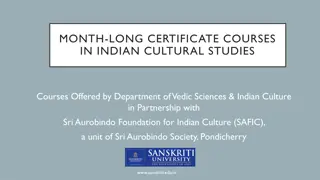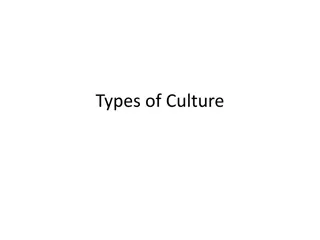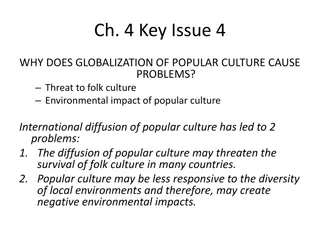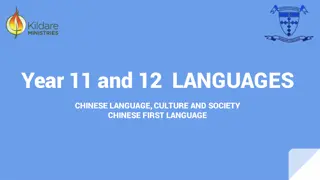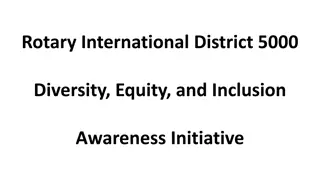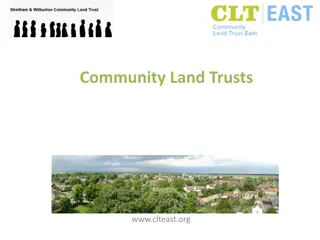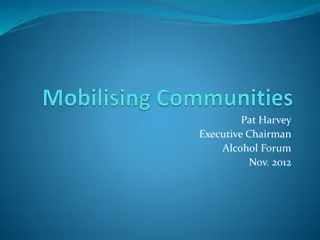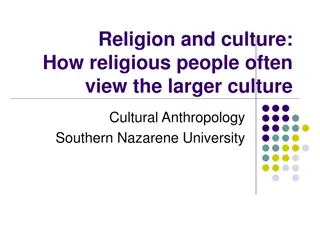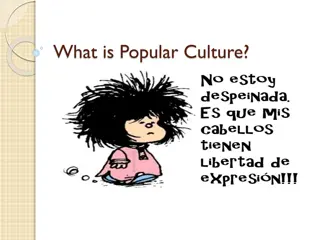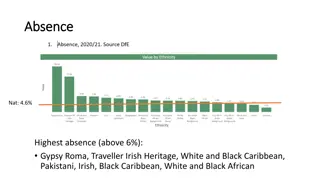The Rich and Diverse Culture of the Roma and Traveler Communities
Culturally rich yet often oppressed, Roma and Traveler communities face discrimination and stereotypes rooted in historical persecution. Despite misconceptions around their language and identity, they strive to reclaim their heritage and traditions while combating systemic marginalization. This article sheds light on the vibrant but misunderstood lives of the Roma and Travelers.
Download Presentation

Please find below an Image/Link to download the presentation.
The content on the website is provided AS IS for your information and personal use only. It may not be sold, licensed, or shared on other websites without obtaining consent from the author. Download presentation by click this link. If you encounter any issues during the download, it is possible that the publisher has removed the file from their server.
E N D
Presentation Transcript
people are culturally rich, diverse, vibrant, oppressed, underrepresented, misunderstood ethnic groups most commonly referredtoas Gypsies. (Romanes for non-Romani people) use to refer to Roma, an ethnic group originating in India around the 11th century. After leaving India, Roma traveled West and were met by hostile, xenophobic Europeans, and so became nomadic duetopersecution,oppression. and
Although many Roma are settled today and live all over the world, discrimination, hate crimes, and apartheid are ever- present. Travelers, sometimes known as Tinkers, are also traditionally nomadic and historically and presently suffer the samestigma andoppressionthat Roma suffer. Over time, Gypsy became a racial slur, insult, especially in the lowercase gypsy, and antigypsyist language is normalized in many languages. In American-English, for example, antigypsyist slurs shopkeeper gypped me!). Racial slurs for Roma and Travelers include Gypsy, Gyppo, specifically, Pikey and Knacker. are idiomatic (eg: That Gyp, and for Travelers
being Gypsy is a lifestyle choice or a state of mind or spirit. They are described as whimsical, sexual, or criminal, which bothperpetuates harmfulstereotypes andinsulted groups. some Roma and Travelers choose to reclaim Gypsy as an act of linguistic and identity empowerment, whereas some Roma,especially ofthe older generations justpreferGypsy. If they aren t victims of racist reporting, then they are victims ofwildly racist politicians orsevere poverty.
There is a common misconception that Roma andTravelers have nowrittenlanguage. There are many different Romani clans (Sinti, Manouche, Lovara, Kalderash, etc.) and each clan has its own dialect of Rromanes, but all of the dialects find their roots in Sanskrit. There are also rumors that Rromanes linguistically impoverished, that we don t have words for tomorrow, possession and many other essential human concepts. is somehow beauty, truth,
the particularly as Roma and Travelers lose their languages. In the U.S., Europe, and elsewhere, governments have made a habit of removing Romani and Traveler children from their parents and transferring them to orphanages where the language is beaten out of them. Historically, legislation across Europe has also prohibited Roma from speaking with their true tongues. Native Americans as well as other indigenous groups oppressed by the colonizers have also been subjected tolanguage-killing. storytelling tradition is dying out,
In European written culture Gypsies are depicted as exotic, passionate, seductive, free-spirited, illiterate and uncivilized characters, but it is almost unknown fact that literature written by Roma/Gypsies themselves exists since more than acentury. Gypsy folklore has been influenced by the folklore of the countries through which the Gypsies have migrated, but Gypsy ethnic groups separated by considerable distances share common folkloric themes. Purely Gypsy themes predominate in the songs, which reflect Gypsy life in the past; Gypsy themes are more rarely found in recently written ballads. The plots of Gypsy folktales are for the most part borrowed.
In the USSR, Gypsy literature developed in the mid- 1920 s after the creation of a writing system based on the Russian alphabet. A seminal figure in Soviet Gypsy literature was A. V. Germano (1893 1955), the author of Ganka Chiamba and Other Stories (1935), Poems (1935), Poems and Songs (1937), and Novellas and Short Stories (published 1960). Another important writer was N. A. Pankov (1895 1959), who translated P. M ri-m e s Carmen in 1935 and A. S. Pushkin s The Gypsies and The Captain s Daughter in 1937. The sociopolitical and cultural journals Romany zorha (1927 30) and Nevo drom (1930 33) were published in theRomany language.
The Roman Moscow Theater stages plays by Gypsy writers. Gypsy literature in the 1920 s and 1930 s, developing in close interaction with Russian literature and other national literatures of the USSR, played an important role in helping the Gypsies adjust to work, take part in the cultural life of the country, andleadasettledmodeofexistence.
After the Baltic republics, Western Byelorussia, the Western Ukraine, and Bessarabia were incorporated into the Soviet Union in 1939 and 1940, Gypsy literature, written in the local Romany dialects and the languages of the republics inhabitants, began a new stage of development in the USSR. In Moldavia, G. V. Kantia (born 1940) has published the collection of poems Gypsy Folklore (1970). In Latvia, K. Rud vi s (born 1939) has published poems, and Leksa M nus-Belugins (born 1942) has produced the collections of poems / Want a Little Horse (1973) and The Little Star (1976). In the Altai, poems by Vano Romano (I. M. Panchenko, born 1941) have appeared. Satkevich has published the collection of poems Strings (1972), and his compilation of Gypsy poems, The Campfires, appearedin 1974.
English literature is no exception, from the Gypsy impostors of Ben Jonson's Bartholomew Fair to Dodie Smith's dog-stealing Gypsies in The Hundred and One Dalmatians. Shakespeare's use of the word "gipsy" has negative connotations, suggesting either rascally acts or eastern lewdness (in Antony and Cleopatra it is shorthand for "Egyptian": a hint of the centuries-old perception that Gypsies came from Egypt). In Daniel Defoe's Moll Flanders, Moll's earliest memory is of wandering "among a Crew of the People they call Gypsies or Egyptians", who did not blacken her skin as they did all the other children "they carry about with them".
Today's Romani writers, on facing up to this hostile literary canon, cannot afford to be afraid of its Virginia Woolfs. Rather, they hope to challenge the predominating view of who they are. Jimmy Storey, a Gypsy writer living in Australia, says he wants to take his readers "beyond the myths and stereotypes and help them realise the diversity of the real Roma world and bring acceptance of and respect for Roma culture and identity". Nicolas Jimenes Gonzalez in Spain writes to be "a witness for the defence of my people and our culture and way of life". Charlie Smith, who chairs the Gypsy Council in this country, aims to help Gypsies "keep their identity as an ethnic group, and fight against Gypsy racism, which is still totally acceptable inEuropean culture".
Papusza is a Romani poet from Poland and as one of the first women to publish her writing, she is considered the Mother of Romani poetry. She survived the Holocaust by hiding in the forest and much of her poetry reflects on that time, most famously, Tears of Blood. Literate gadj neighbors taught her to read, and though her family and community severely disapproved, she persevered. Jerry Ficowski, a poet, fiction writer, essayist, and translator. He occupies a peculiarandunique placein Polish literature. He discovered her in 1949 performing her songs with her husband, a violinist, and encouraged her to write them down. He translated and published her poetry in a magazine that supported the force settlement of Poland s Roma, and her work became associated with the political movement to ghettoize,/geto:z/ segregate, the Roma. Because of this breach, breaking, of trust, her community declared her marime and she was exiled. She spent great periods of her life in silence and died disgraced. However, her work lives on, and though only thirty- one of her poems have been recorded, she is one of the most important figuresinRomaniliterature.
Papuszas narrative poem Tears of Blood seems to be the earliest witness account of the Poraimos (that is, the German Genocide of the Roma) written in Romani. It is the Roma counterpart to Itzhak Katzenelson s harrowing TheSong oftheMurderedJewish People. Don t letGod or anyone live throughwar, [10] in greatpovertyand a bloody tear. What apoor heartendured AJewish child, ARomni with herRoma children!
The poem speaker explicitly describes the Romani experience in Europe at that time. She describes soldiers and Germans, hiding in the forest, the fear of being hunted, and imminent, so near/close, death. It s the cultural and political context of the poem, and knowing that the speaker is describing WWII is essential to its analysis. At the same time, we know that Papusza had a very similar experience to the speaker of her poem. She was also in hiding in the forest, also hunted,also cold and terrified.
It talks about the myth of pelicans feeding their young from the blood of their own breast and how they were then seen as Christ-like animals in the Middle Ages. That helped us to understand the meanings of self-sacrifice and cannibalism in the poem with respect to the cycle of discrimination, poverty, and begging or crime that some impoverished Romani are trapped in. It could also be a reference to the isolation that so many Romani experience and how the Romani community can only count on themselves.





